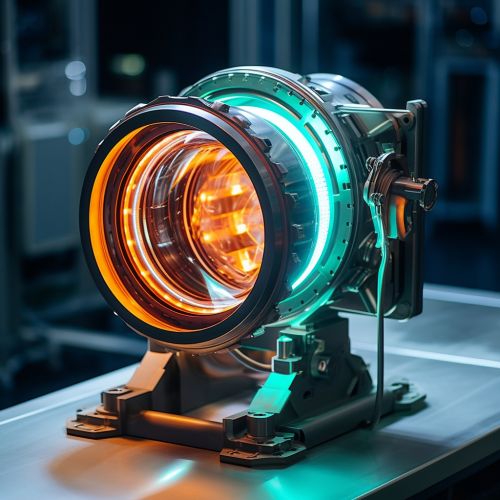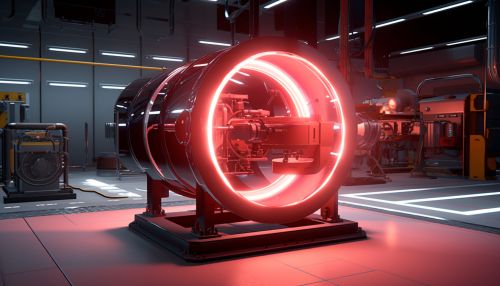Ion thruster
Introduction
An ion thruster is a type of electric propulsion system used for spacecraft propulsion. It creates thrust by accelerating ions using electricity. The term is strictly used to refer to gridded ion thrusters, but may often more loosely be applied to all electric propulsion systems that accelerate plasma, since plasma consists of ions.
History
The concept of ion propulsion, specifically gridded ion thrusters, was first introduced by Robert H. Goddard in 1906. However, it was not until the 1950s that the idea was seriously considered for practical applications. The first successful test of an ion thruster was performed by Harold R. Kaufman in 1959 at NASA's Glenn Research Center.


Working Principle
Ion thrusters function on the principle of electrostatics. The basic idea is to create ions and then accelerate them using an electric field. This is achieved by introducing a gas into the thruster and ionizing it, typically using a method such as electron bombardment. The resulting ions are then accelerated out of the thruster using grids charged to a high voltage, creating thrust.
Types of Ion Thrusters
There are several types of ion thrusters, each with their own unique characteristics and applications. The most common types are gridded ion thrusters, Hall effect thrusters, and Field Emission Electric Propulsion (FEEP) thrusters.
Gridded Ion Thrusters
Gridded ion thrusters are the most common type of ion thruster and are the type most often referred to when the term "ion thruster" is used. They use a grid of electrodes to accelerate ions and create thrust.
Hall Effect Thrusters
Hall effect thrusters operate on a similar principle to gridded ion thrusters, but use a magnetic field to trap electrons and use them to ionize the propellant. This results in a more efficient ionization process and higher thrust levels.
Field Emission Electric Propulsion (FEEP) Thrusters
Field Emission Electric Propulsion (FEEP) thrusters are a type of ion thruster that use a very thin wire as a propellant, which is ionized and accelerated to create thrust. They are typically used for very precise attitude control on spacecraft.
Applications
Ion thrusters are used in a variety of applications, primarily in space propulsion. They are particularly well-suited for missions requiring high efficiency, long life, and low thrust, such as station-keeping for satellites and interplanetary missions.
Advantages and Disadvantages
Like any propulsion system, ion thrusters have both advantages and disadvantages. Their main advantage is their high efficiency, which allows for a significant reduction in the amount of propellant required for a mission. However, they also have several disadvantages, including low thrust levels and the need for a significant power supply.
Future Developments
Research is currently being conducted into several areas of ion propulsion, including increasing the efficiency and thrust levels of ion thrusters, as well as developing new types of ion thrusters.
